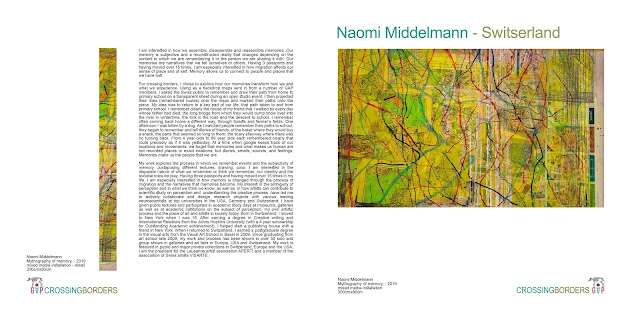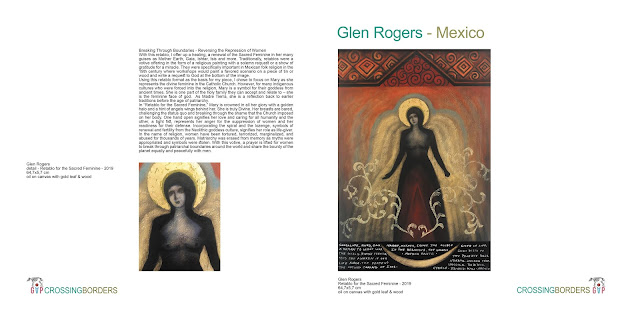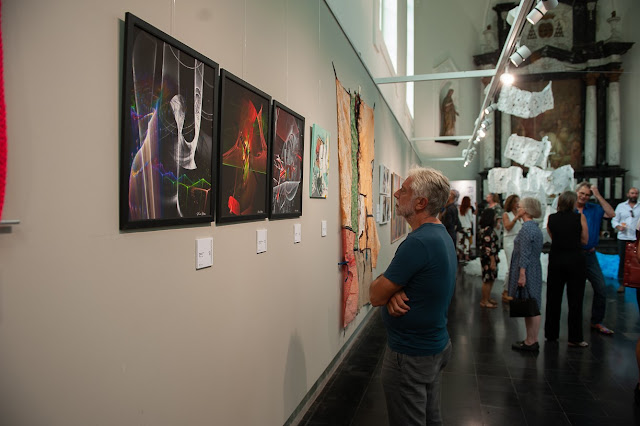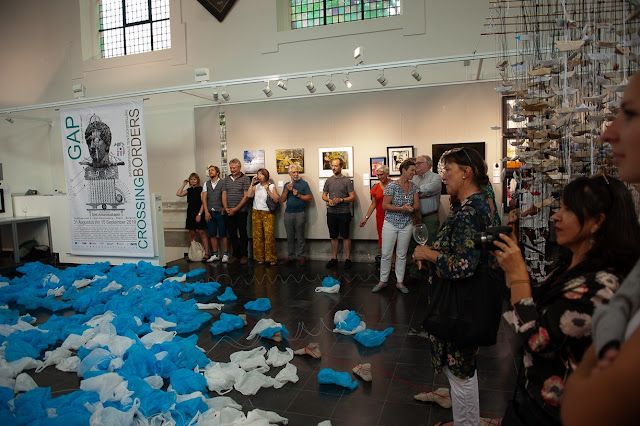Over 30 artists connected to the international mixed media collaborative platform Global Art Project (GAP) participateed within the CrossingBorders exhibition that took place at the Sint-Amanduskapel - Campo-Santo - Visitatiestraat 2 - 9040 Sint-Amandsberg in Ghent in Belgium from August 31 till September 15 2019. The CrossingBorders exhibition was officially opened on August 31 by Tineke Schuurmans representing museum Verbeke Foundation in Kemzeke in Belgium.
CrossingBorders resulted in an
extensive exhibition conceptualized and curated by Ron Weijers in the Netherlands and in
collaboration with Carl Heyward and specifically for GAP members.
CrossingBorders is a conceptual collaborative group exhibition project for art professionals affiliated with Global Art Project GAP worldwide aiming on transferring the projects concept to the public and extending the participants professional international networks and art market. The CrossingBorders exhibition aims to bring together Global Art Project affiliated artists from all over the world, who are highly motivated to collaborate with each other across national borders with the ambition to enter each other's markets artistically. The curators of the CrossingBorders exhibition, stimulate and expect a conceptual reflection on distances or barriers, included in the perceptual context of a border, a blocking in thinking, acceptance and/or understanding by means of political issues, globalisation, (im)migration, climate change, gender, race, culture, religious racism, terrorism, genocide, war, misogynist behavior, feelings of fear or superiority etc etc... In other words, the GAP artists will reflect upon their own conceptions about what constitutes a border or boundary and what it means to cross it.
Furthermore, the CrossingBorders concept also strongly intends to reflect on the role of migration as embodied in works of art. Centring on the physical and conceptual manifestations of the effects of migration and migrants on art. This issue also invites a focus on diasporas of practitioners and their reception by new audiences or consumers. The current ‘refugee crisis’ represents, above all, an international political crisis as lack of coordinated action that for instance has stretched the European Union relations almost to breaking point. In many countries populist right wing parties have been given a new lease of life with increasing numbers of people turning their backs on an open and liberal society. CrossingBorders stimulates reflection on the role of migration as embodied in works of art, material culture and their conservation.
GAP is linked by activity in mixed-media art practice, which may be reduced to working with the materials at hand and has antecedents in collage, assemblage, found-object and related practice. Their affinity with Fluxus, Cobra, and the Dada Art Movement is a recognition of the importance of being attuned to the collaborative future.
CrossingBorders participating artists
Nadi Adatepe - Norway, Lynn Arnold - USA, Brian Auerbach - USA, Francis Beaty - USA, Pat Calabro - USA, Linda Coppens - Belgium, Mar Daines - France, Mikel Frank - USA, Ana Gabiño - Mexico, Carl Heyward - USA, Jennifer Homer-Hynes - USA, Christopher Hunnicutt - USA, William Jaggers - USA, David Jenowe - USA, Macha Melanie - France, Naomi Middelmann - Switserland, Emmanuel Montoya - USA, Susumu Ohira - Japan, Judith Pauly-Bender - Germany, Compagnie Puls'Art - France, Glen Rogers - Mexico, Isabel Ruiz Perdiguero - Spain, Akiko Suzuki - Japan, Patrick Tagoe-Turkson - Ghana, Christine Verhaert - Belgium, Frans van Viegen - the Netherlands, Ron Weijers - the Netherlands, Syporca Whandal - Hungary, Madeleine Wories - USA, Dimitri Xato - France














































































































